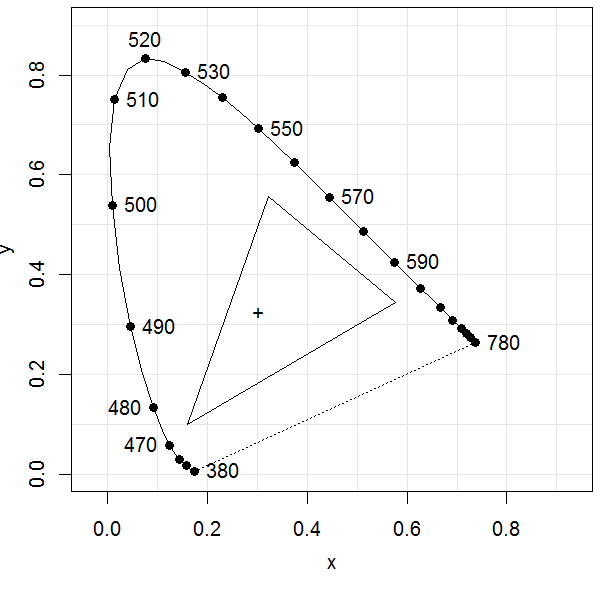CIE 1931 Color Space¶
The CIE 1931 XYZ color space was the first attempt to produce a color space based on psychophysical measurements of human color perception and can be considered as the basis for almost all other color spaces. This three-dimensional color space underlies most color management systems. It is supposed to contain all perceivable colors—the human gamut. Many of these colors cannot be shown on monitors or printed.
We use the two-dimensional representation of the CIE 1931 color space where x and y denote the color in a two-dimensional diagram and Y is the luminance for defining the colors presented in our experiments. The xyY color space corresponds to the XYZ color space like this:
The figure below shows the gamut the fluorescent tubes of our color laboratory can produce. The cross denotes the color of our black-and-white monitor. In order to adjust the wall of the booth and the background of the monitor to the same color, we have to adjust the luminance of the tubes so that the color of the walls ‘hits’ the color of the monitor (see How to Calibrate the Booth on how we do this).
Useful links:
- Information on CIE 1931 XYZ color space on Wikipedia.
- Transformation matrices for different color spaces documented by Bruce Lindbloom.
- Python colormath module by Gregory Taylor.
